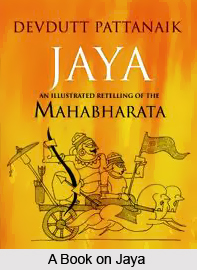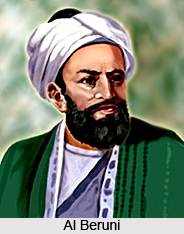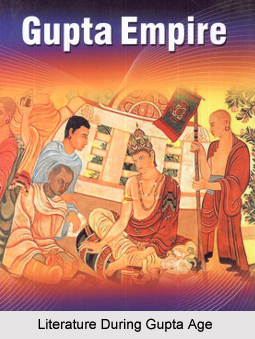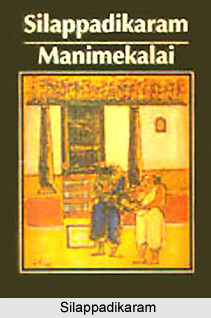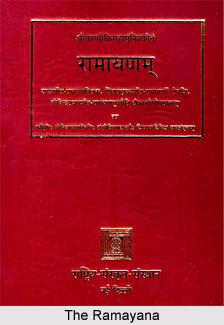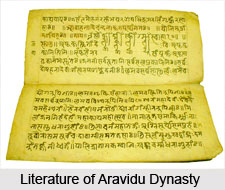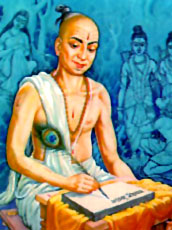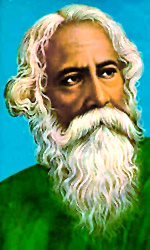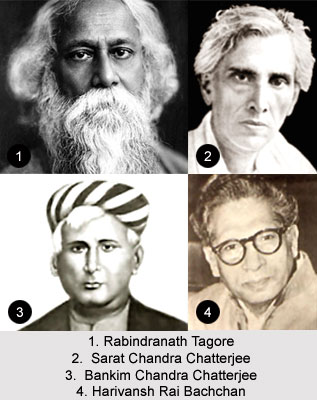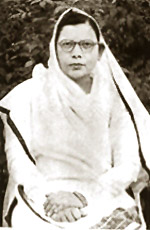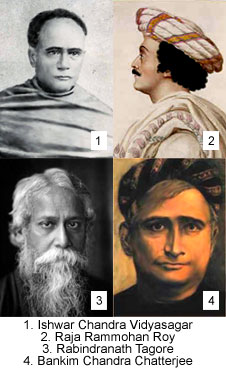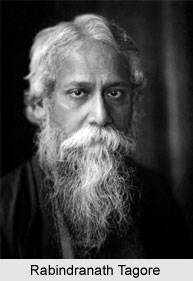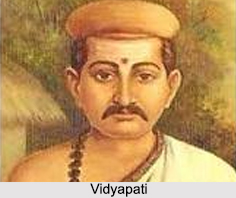 Vaishnava Literature in Bengal developed in the 14th century with "Shrikrishnakirtan" composed by Baru Chandidas. It is the first epic in Bengali Language. It has 418 lyrics on Radha and Lord Krishna. "Shrikrishnakirtan" is a lyrical play. In the second half of 14th century many lyrics were composed by Chandidas on the story of Radha and Krishna. Many Bengali poets, both Hindu and Muslim, composed Vaishnava lyrics in Brajabuli as they were inspired by Vidyapati.
Vaishnava Literature in Bengal developed in the 14th century with "Shrikrishnakirtan" composed by Baru Chandidas. It is the first epic in Bengali Language. It has 418 lyrics on Radha and Lord Krishna. "Shrikrishnakirtan" is a lyrical play. In the second half of 14th century many lyrics were composed by Chandidas on the story of Radha and Krishna. Many Bengali poets, both Hindu and Muslim, composed Vaishnava lyrics in Brajabuli as they were inspired by Vidyapati.
Literature of Chaitanya
Chaitanya Mahaprabhu was inspired by lyrics of Jayadeva, Vidyapati and Chandidas. He composed lyrics on Radha and Krishna. His lyrics reflected the spiritual aspects of Radha- Krishna"s relationship. Post Chaitanya, Vaishnava literature is the product of the movement that was initiated by Chaitanya also known as the Vaishnava movement. Through this literature Radha and Krishna`s romance depicted the mystical relationship of the human soul to the divine soul. Many lyrics, informative biographies, and philosophical scriptures regarding Vaishnavism were written in Bengali Literature too.
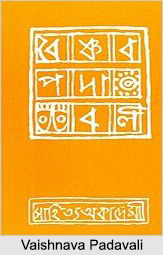 Creation of Vaishnava Padavali
Creation of Vaishnava Padavali
Vaishnava Padavali was composed for three hundred years till the 18th century which have been inspired by different aspects of love. Post-Chaitanya era the themes of Vaishnava lyrics were enlarged. New lyrics were being added to reveal other aspects of Krishna. The lyrics that have been inspired by Vaishnava philosophy also include hymns and devotional poems. The post-Chaitanya poets added symbolic and spiritual meanings to the romance of Radha and Krishna.
Vaishnava Poets
There is no perfect account of number of Vaishnava poets and how many lyrics they composed. The manuscripts of most of these lyrics have not been found. There is a possibility that the lyrics were not written and they were sung by Kirtan singers. Some lyrics that can be dated to the 18th century includes Bishwanath Chakravarty`s "Ksanadagitachintamani" (1705), Radhamohan Thakur`s "Padamrtasamudra", Vaisnavadas` "Padakalpataru" (1760) and Narahari Chakravarty`s "Gitachandroday". "Padakalpataru" has 3,000 Vaisnava lyrics by nearly 150 poets. According to Vaishnava concept of aesthetics and different episodes of Krishna`s life the lyrics have been arranged.
Vaishnava Poets from 16th to 19th Century
In the late 19th century Dinesh Chandra Sen has mentioned the names of 164 composers and 4,548 lyrics in "Banga Bhasa O Sahitya" (1895). More compositions were found thereby raising the number of Vaishnava lyrics to about 8,000. Muslim poets like Afzal, Alaol, Syed Sultan, Syed Martuza and Ali Raza also wrote Vaishnava Padavali.
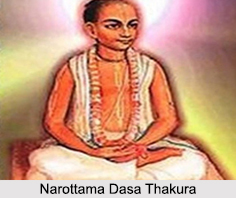 Some prominent Vaishnava poets who belonged to the 16th century were Murari Gupta, Narahari Sarkar, Basudev Ghosh, Lochandas, Jnanadas, Govinda Das, Balaram Das and Dwija Chandidas. The 17th century poets were Kaviranjan, Kavishekhar, Radhaballabh Das, Ghanashyam Das and Ramgopal Das and others. The 18th century poets were Vaisnavadas, Chandrashekhar, Radhamohan Thakur, Narahari Chakravarty and Yadunandan. Chandidas wrote on love and union, Jnanadas on affection and Govindadas on trysts.
Some prominent Vaishnava poets who belonged to the 16th century were Murari Gupta, Narahari Sarkar, Basudev Ghosh, Lochandas, Jnanadas, Govinda Das, Balaram Das and Dwija Chandidas. The 17th century poets were Kaviranjan, Kavishekhar, Radhaballabh Das, Ghanashyam Das and Ramgopal Das and others. The 18th century poets were Vaisnavadas, Chandrashekhar, Radhamohan Thakur, Narahari Chakravarty and Yadunandan. Chandidas wrote on love and union, Jnanadas on affection and Govindadas on trysts.
Vaishnava Biographies
"Charitakavya" Vaisnava biographies grew out of the life stories of Chaitanyadev and his associates. The first poetical biography in Bengali is "Chaitanyabhagavata" (1548) that was composed by Brindaban Das in 25,000 couplets. Lochandas` "Chaitanyamangal" (1576) was the next biography on Chaitanyadev. Lochandas was followed by Jayananda who composed "Chaitanyamangal". Krishnadasa Kaviraja wrote another biography of Chaitanyadev- "Chaitanyacharitamrta" (1612). Vaishnava lyrics may be divided into four categories based on the theme- the life of Chaitanyadev, Bhajan, the relationship of Radha and Krishna and spiritualism.
Biographies of Other Vaishnava Saints
There were several biographies about Advaita Acharya who is the oldest of Chaitanyadev`s companions. The first book on him in Bengali verse was written by Ishan Nagar. Then was "Advaitamangal" by Haricharan Das. Thereafter was the book with the same title composed by Shyamdas. "Advaitabilas", was written by Narahari Das in the 18th century. Loknath Das composed two biographies on Advaita Acharya`s wife Sitadevi – "Sitacharita" and "Sitagunakadamva". "Premavilas" was a biography (1601) about Srinivas who was another close associate of Chaitanyadev and it was written by Nityananda Das. He also figures in Yadunandan Das` "Karnananda" (1608). Gurucharan Das`s "Premamrita" and Manohar Das`s "Anuragavallari" are also other works. Narahari Chakravarty wrote on the life of Narottama Thakur and the book was named "Narottamavilas".
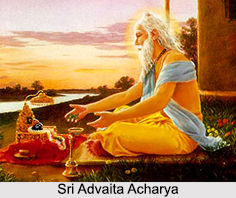 Plays in Vaishnava Literature
Plays in Vaishnava Literature
A number of plays with Vaishnava themes were written. Kavikarnapur wrote a Sanskrit play and translated into Bengali language and named it "Chaitanyachandrodayakaumudi". This play emphasizes the austere side of Chaitanya`s life and his devotion to Krishna.
Other Contributions towards Vaishnava Literature
Rabindranath Tagore composed "Bhanusingha Thakurer Padavali" (1884) in Brajabuli. Maladhar Basu translated the 10th and 11th cantos of the Sanskrit "Srimad Bhagavata" into Bengali and named it "Shrikrishnavijay". In this, Krishna`s divinity has been focused on. Afzal had composed some lyrics on the romance of Radha and Krishna.
